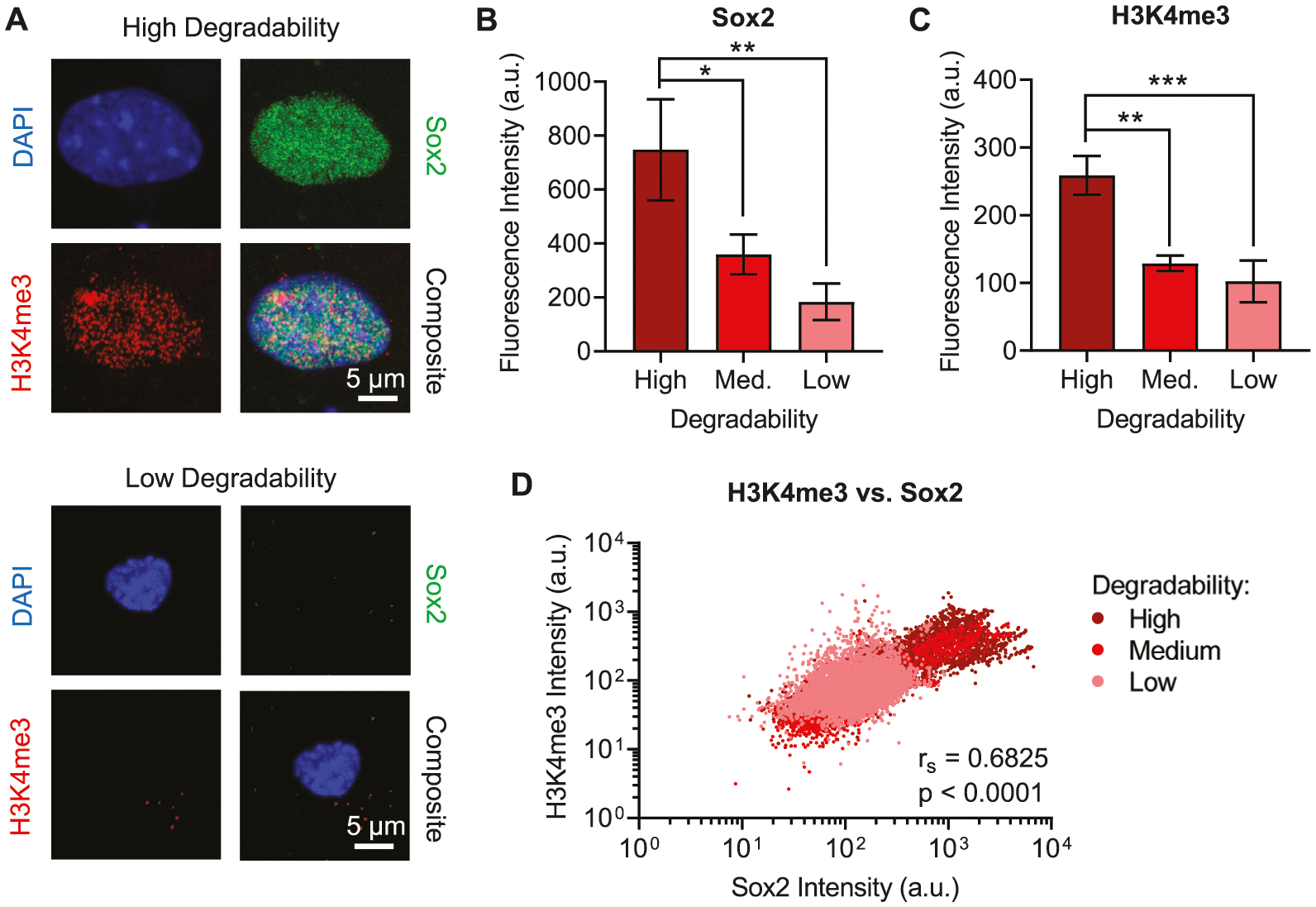Figure 3.

High degradability gels and Sox2 positive nuclei are correlated with the activating chromatin mark H3K4me3. A) Representative immunofluorescence images of nuclei from NPCs that were cultured in either high or low degradability hydrogels for 7 days. Blue: DAPI (DNA); green: Sox2; red: H3K4me3. NPCs cultured in high degradability hydrogels exhibit higher B) Sox2 and C) H3K4me3 staining, measured as fluorescence intensity within nuclear (DAPI+) regions of interest (ROIs), compared to NPCs cultured in medium or low degradability gels. Data are presented as mean ± s.d. n = 3 independent gels. *p < 0.05, **p < 0.01, ***p < 0.001, one-way ANOVA with Bonferroni post hoc test. D) Sox2 and H3K4me3 intensity are positively correlated (Spearman correlation) across all three hydrogel degradability conditions tested. Data points represent 8047 nuclear ROIs for high degradability gels, 6119 nuclear ROIs for medium degradability gels, and 6610 nuclear ROIs for low degradability gels. Biaxial plots for H3K4me3 versus Sox2 intensity for individual replicates are presented in Figure S8, Supporting Information.
